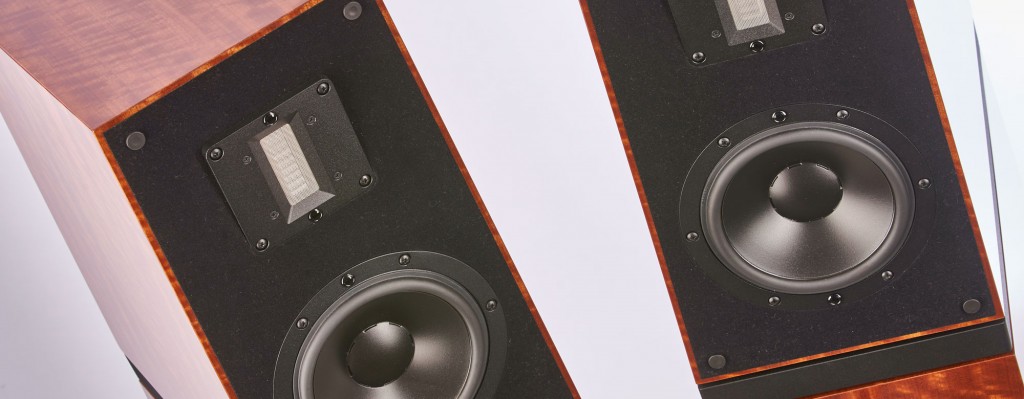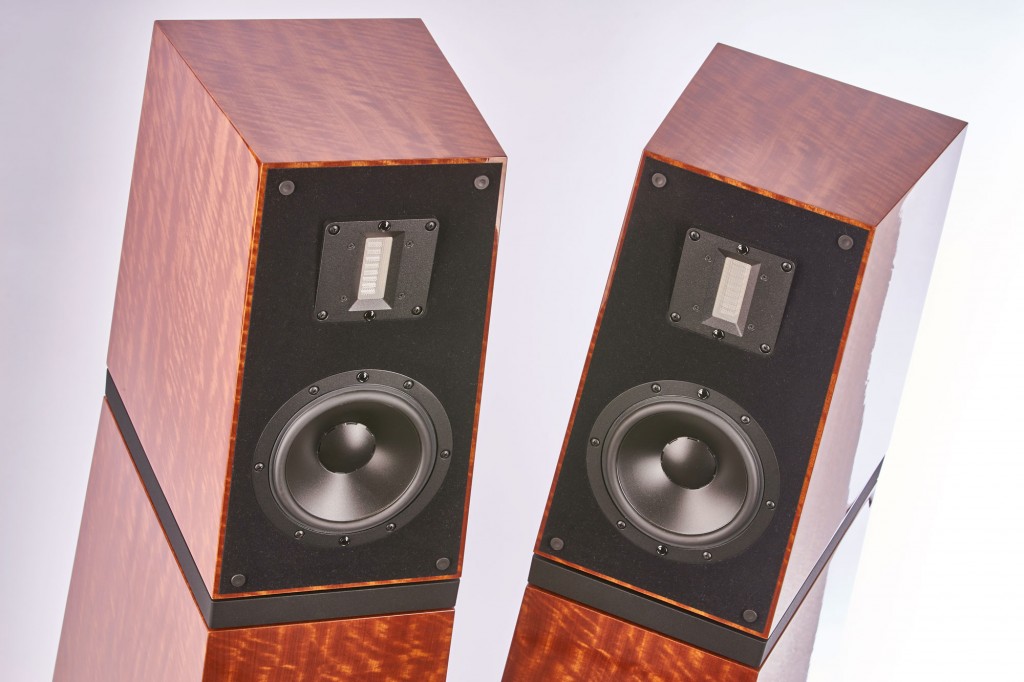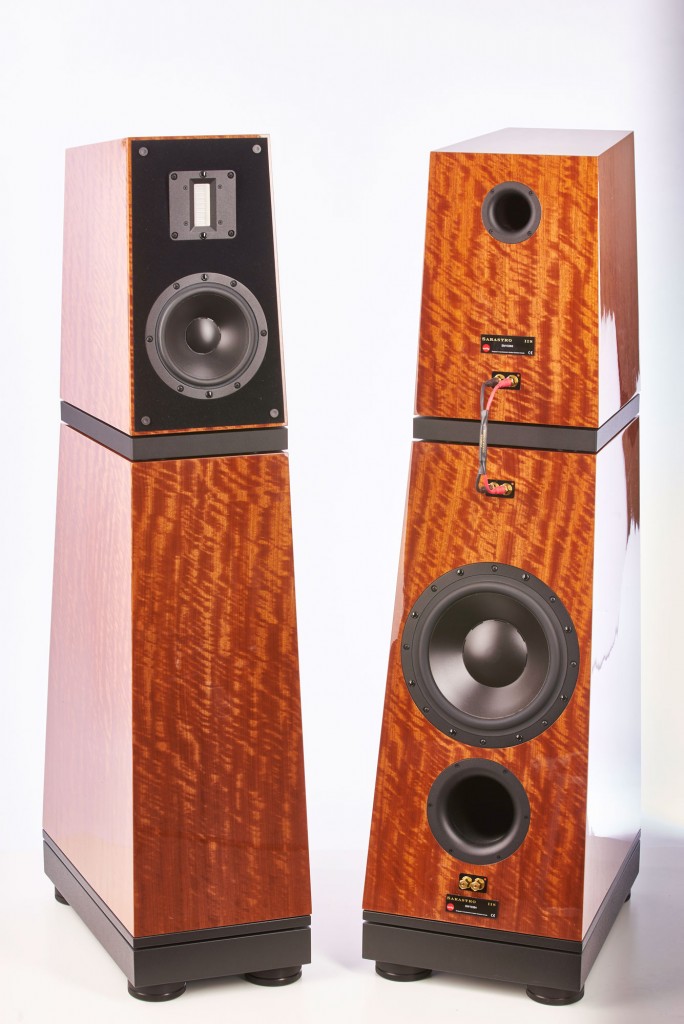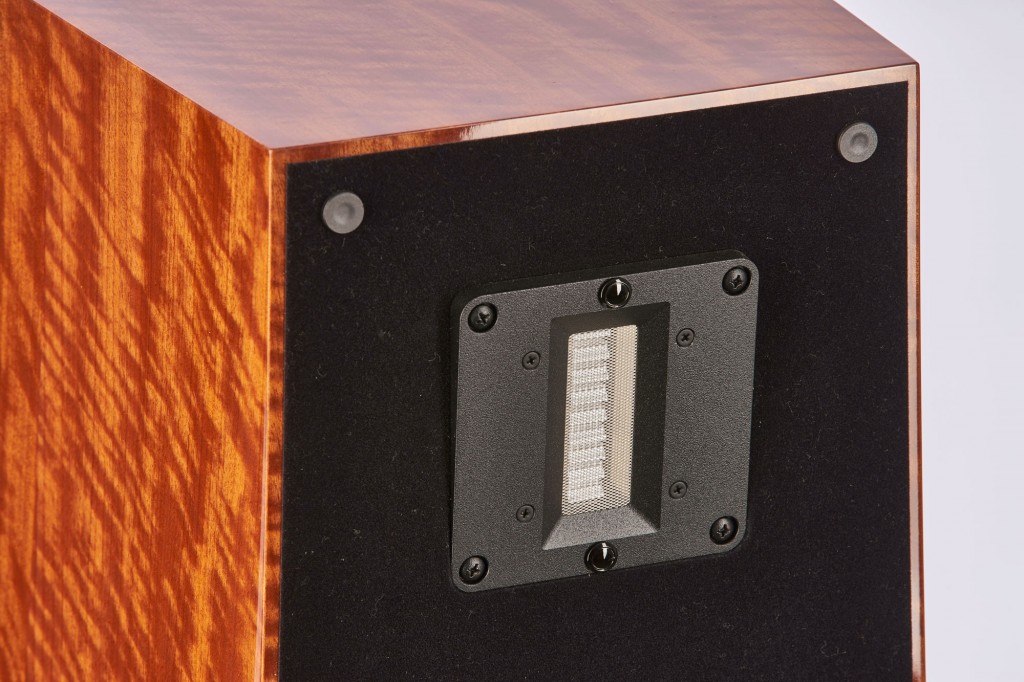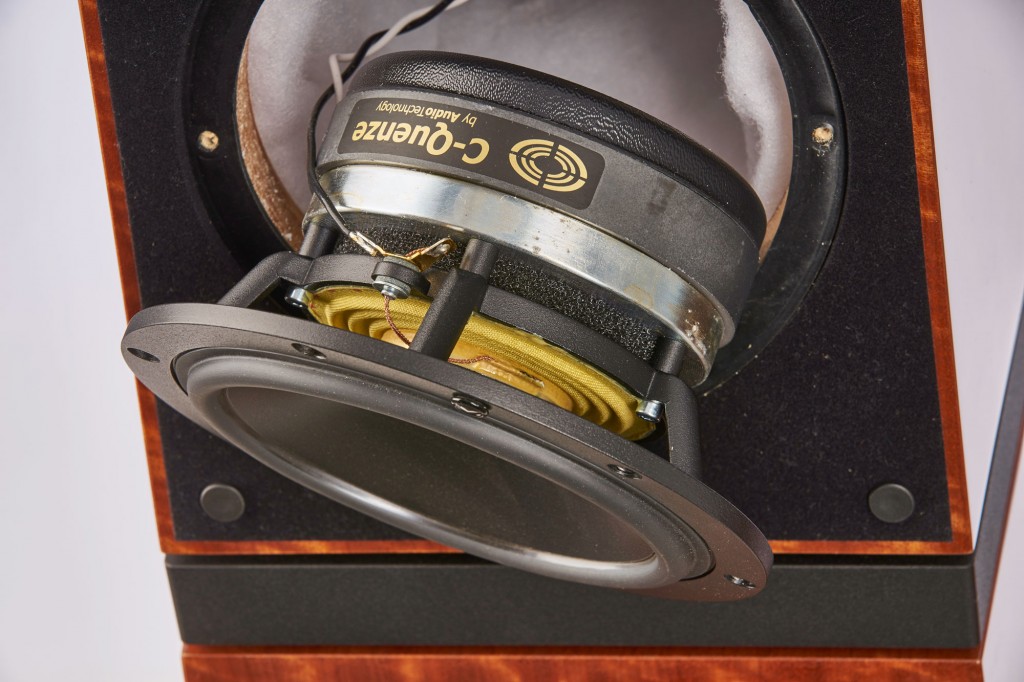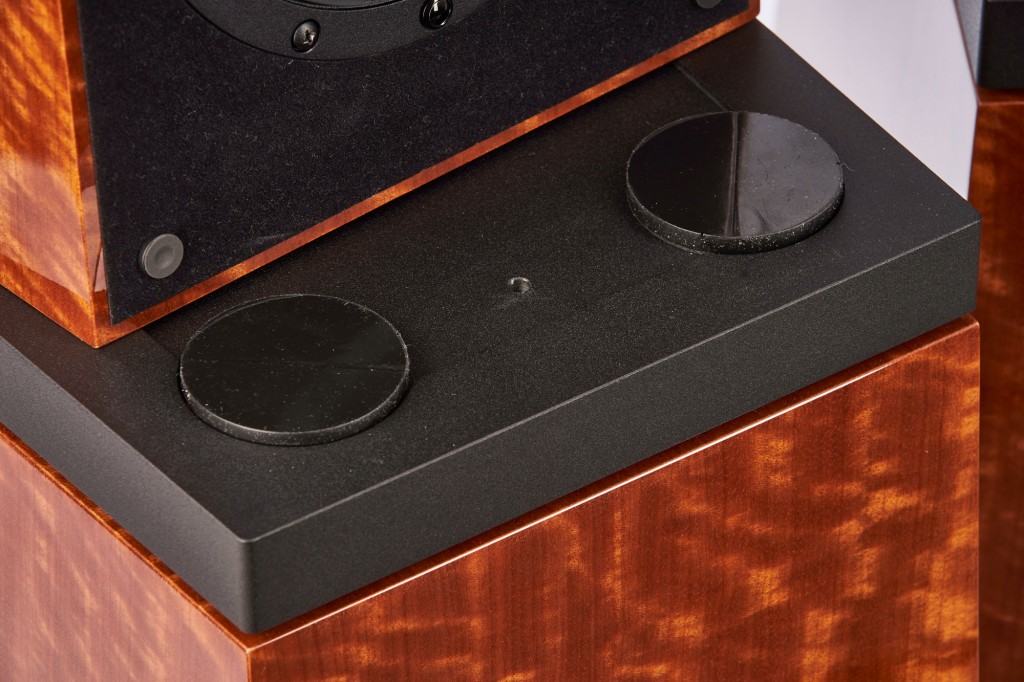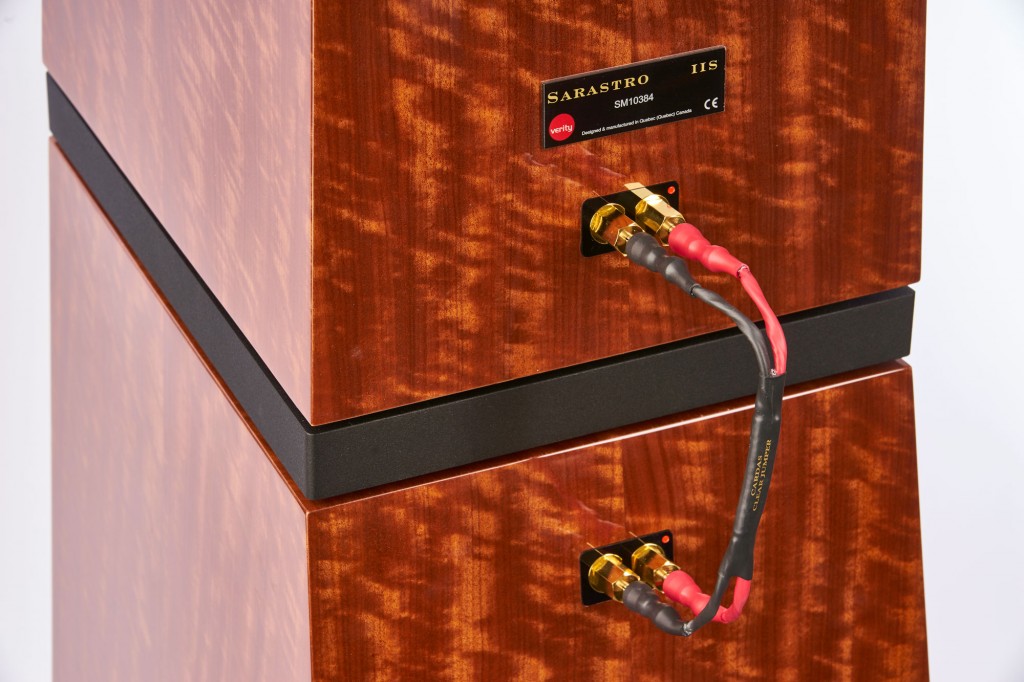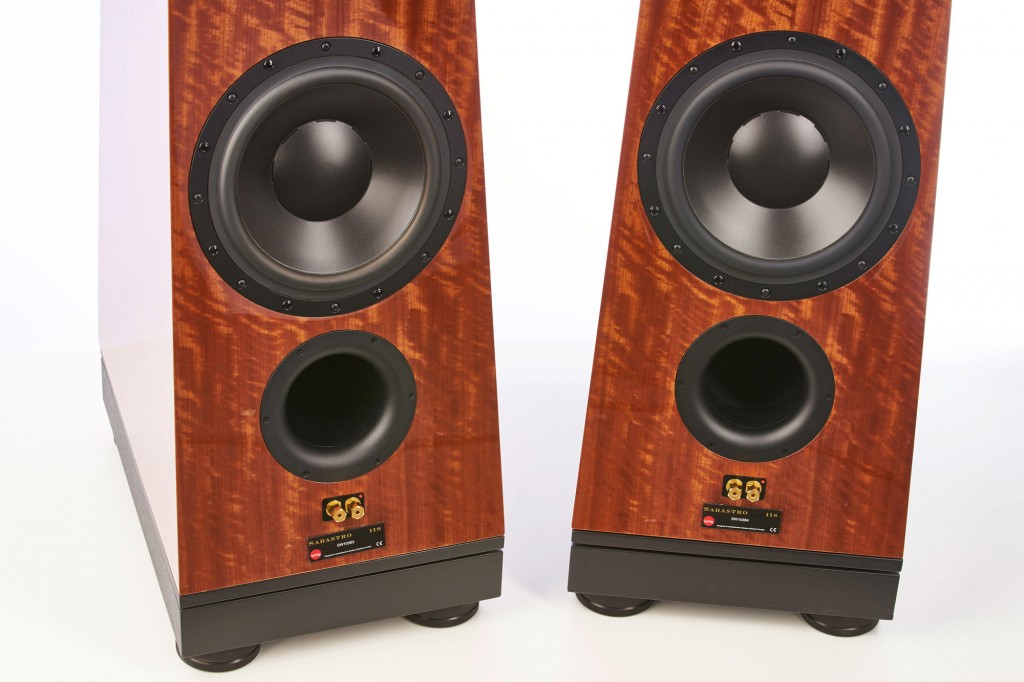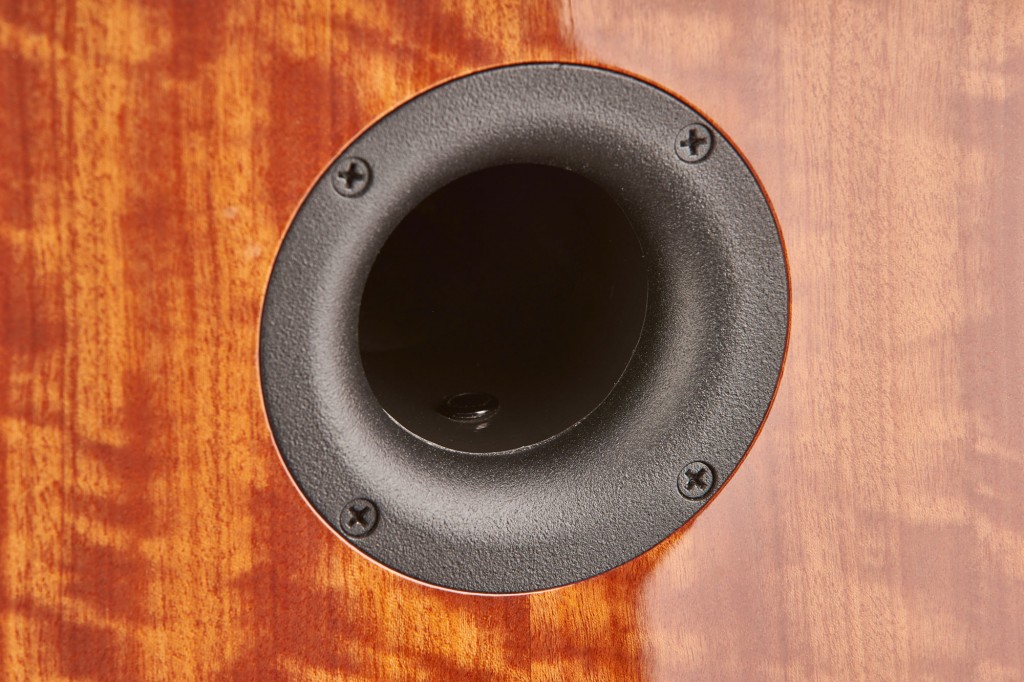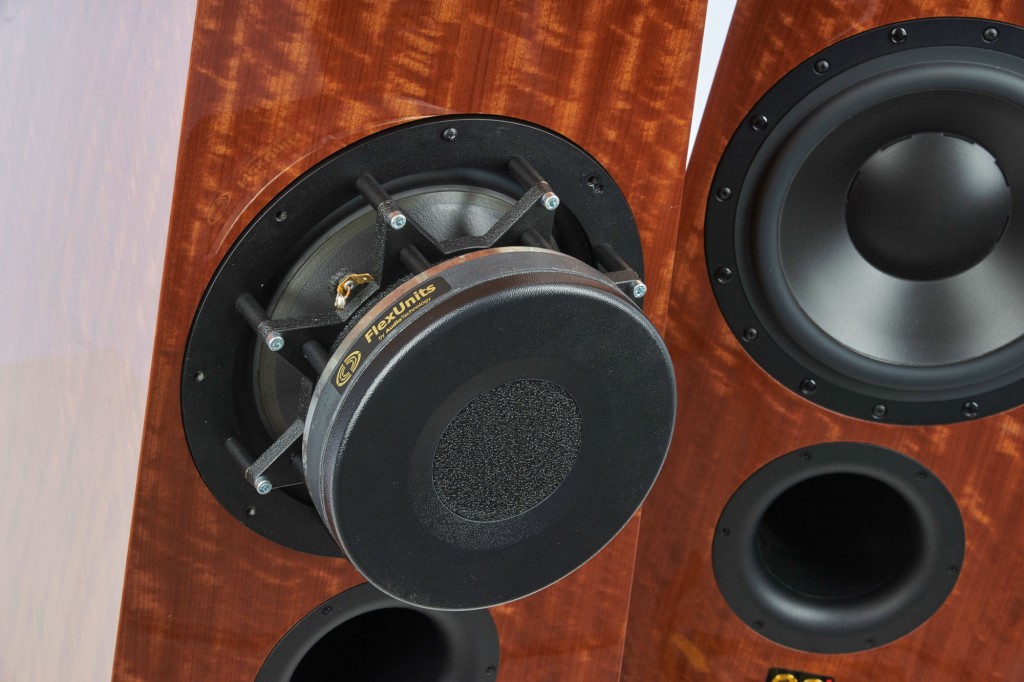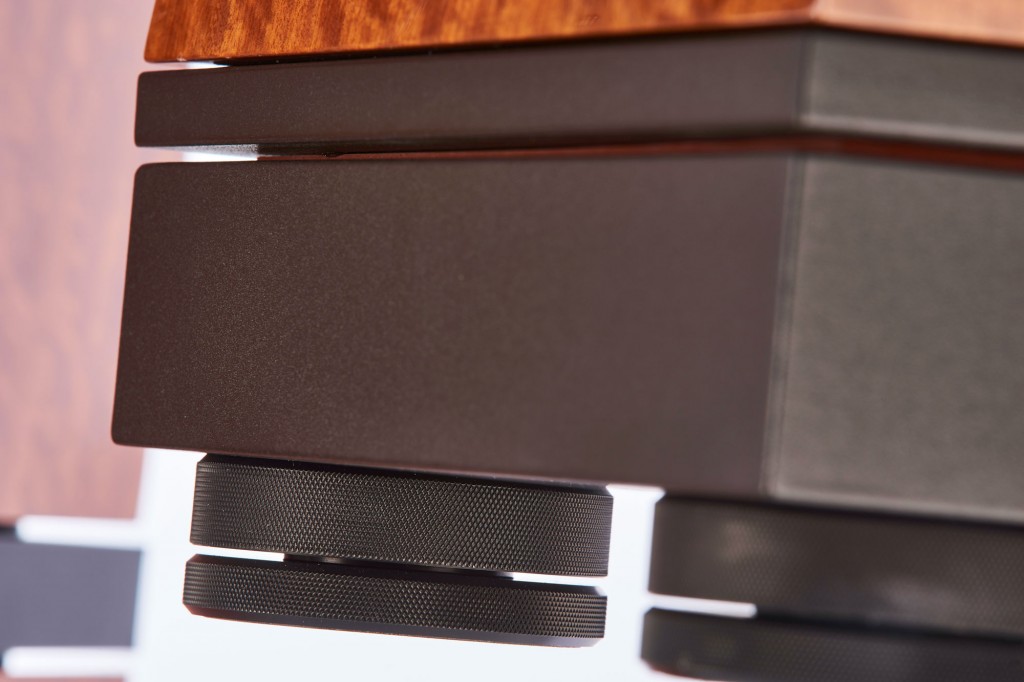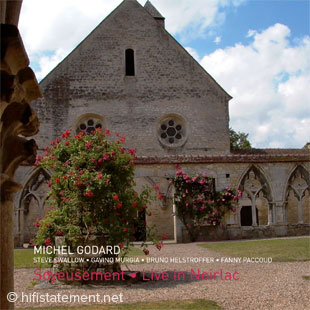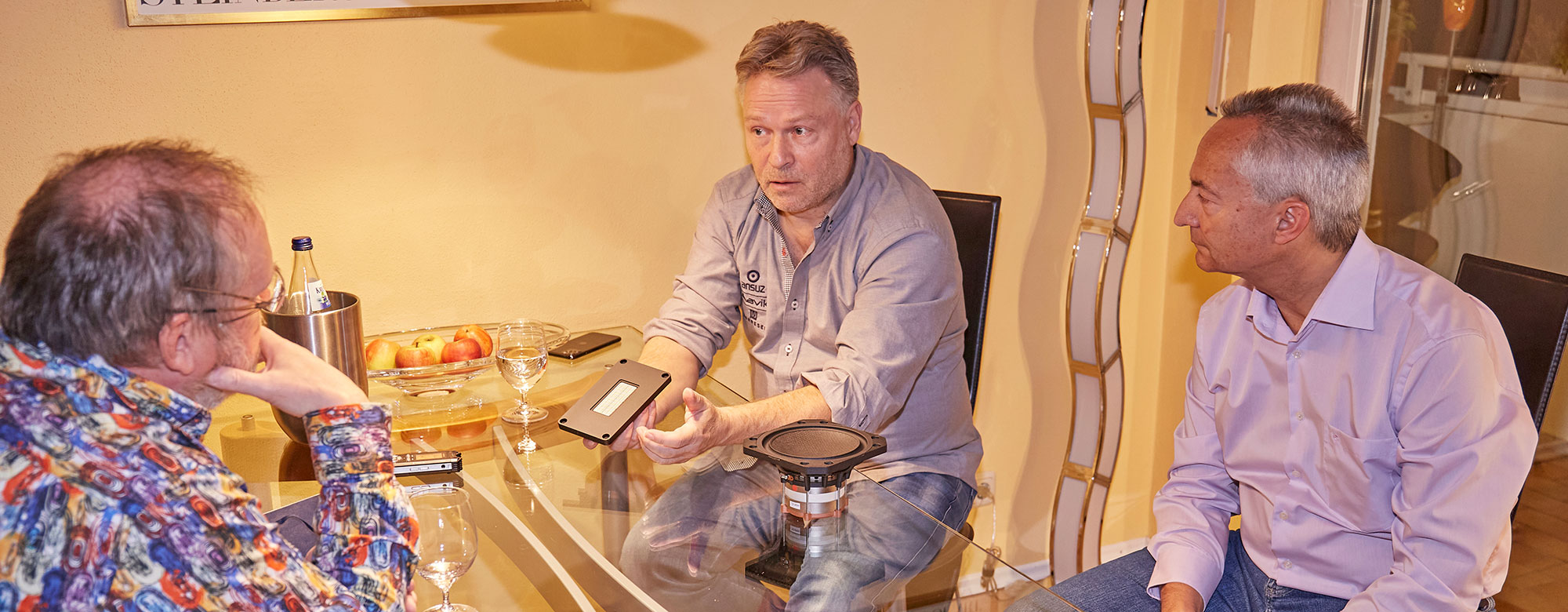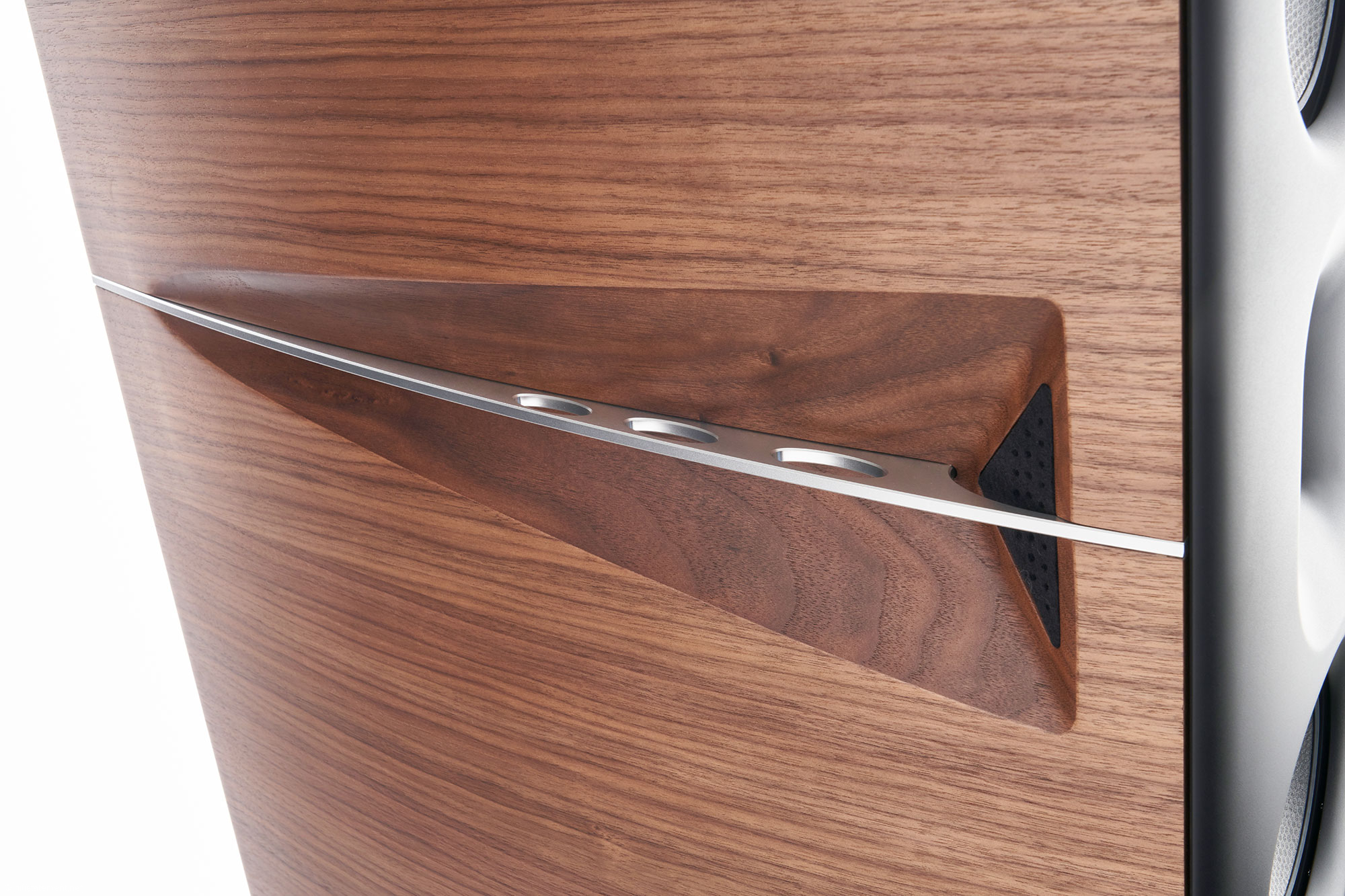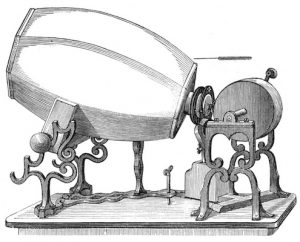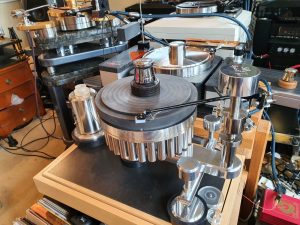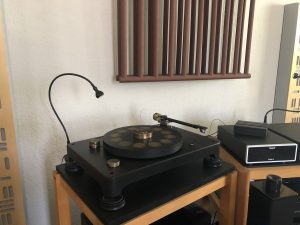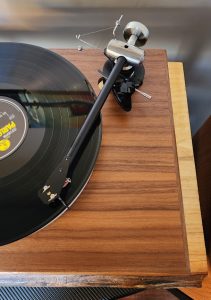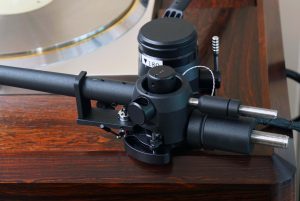I had hoped that testing the Verity Sarastro IIS would be fun rather than hard work, but I would never have expected this premium speaker to also reveal some interesting things about the acoustics of my listening room. The Verity's provide listening pleasure and insight
From a purely aesthetic standpoint, taking delivery of the Sarastros is a real treat, because they come in four high-quality aluminium flight-cases. Unfortunately, these weigh almost 240kg combined. Thanks to the well thought-out packaging, Jan Sieveking–owner of Verity's German distribution – and I managed to haul the speakers into my listening room without damaging either their high-gloss finish or our spinal discs. Although the Sarastro IIS belong to the "eXR Loudspeaker Line", where eXR stands for Extended Range and is supposed to represent enhanced efficiency, extended dynamics, and a broader frequency response, they look rather living-room-friendly and classy in the area where my LumenWhites usually sit. They don't dominate the room at all. Verity has managed to design a full-range loudspeaker–according to the data sheet they have a frequency response all the way down to 20Hz and an efficiency of 93dB at one watt and metre – with a quite modest appearance. On the one hand, this is probably because at first glance the Sarastros look like monitors on stands made of the same veneer, since there is no driver visible on the bottom part. On the other hand, the cabinet gets a little wider towards the back to make room for the 280mm low frequency driver. After problems with venting noise were discovered in bulk parts, the bass-reflex port is now custom-made for Verity out of aluminium. It is also mounted on the rear.
Standing waves have no chance of occurring within the Sarastro's cabinet as it has almost no parallel surfaces.
Both the bass driver and the low/midrange driver in the monitor cabinet are produced by Audio Technology of Denmark according to Verity's specifications. After their American supplier had trouble delivering, the Canadian loudspeaker experts started manufacturing their own ribbon tweeters for the Sarastro IIS–as well as for the flagship models, the Lohengrin and the Monsalvat: The parts are sourced from Europe and then assembled by hand in Canada. The closely spaced, direct gold-plated speaker terminals made out of soft copper, which make connecting sturdy spade connectors such as those from Göbel a bit tricky, have been in use since just after the company was founded until today. Special film capacitors are made for Verity by SRC in France. As you can see, there is hardly a detail that Verity doesn't pay attention to.
As with almost all Verity speakers, the bass is emitted towards the back. This is ideal for my listening room.
This is also true for the design of the speaker cabinet. Its wider rear is responsible for the sides not being parallel, which prevents standing waves forming on the inside. By default, the low-frequency module rests on Floor Isolation Stands. Between the upper plate and the cabinet is a dual-layer elastomer sandwich to dampen low frequency resonance with a few centimetres of carbon foam in between, which was originally developed to shield high frequency radiation, but also is capable of absorbing energy within the audio band and transforming it into heat.
This seemingly solid but still surprisingly light black block not only prevents energy from the speaker from interacting with the floor below, but also leaves the Sarastro IIS unaffected by the floor material, so that it makes no difference whether they are sitting on carpet, wood, or a tile floor. Mounted underneath the decoupling block are four large anti-skid, height-adjustable aluminium feet that make firm and stable positioning of the loudspeaker very easy. The mid/high-frequency cabinet is decoupled from the low-frequency module by a three centimetre thick aluminium plate with sorbothane pads. However, this measure which, according to Verity's product information, is intended to isolate the monitor from the woofer by the mean of mechanical impedance shifting, doesn't result in the monitor being easily movable against the base. The positions of the low/mid-frequency driver and the ribbon tweeter are clearly defined, resulting in stable imaging.
The perfectly integrated ribbon tweeter is assembled at the Verity factory from parts sourced from Europe.
I have to admit: I don't usually read user manuals. I was a little surprised that Verity Audio publishes neither frequencies nor order of the crossover in their technical data sheet. When I was almost done writing this article, I did take a peek in the manual and found these values: The 280mm woofer hands over to the mid-frequency driver at 150Hz with a crossover of 6dB slope. Third-order filters separate the mid-frequency driver from the ribbon tweeter at 6.5kHz.
The mid-frequency drivers are manufactured to Verity's specifications by Audio Technology in Denmark.
Since this is the first rendezvous of Verity and Hifistatement, I would like to introduce this by now well-renowned loudspeaker manufacturer in a little more detail. Verity has now been in business for 21 years and is located in Quebec City in the francophone part of Canada. The Company was founded by electrical engineer and passionate guitarist Bruno Bouchard and Julien Pelchat, who had been working in recording studios and engineering live events since his youth and later became an acoustician for studios. Prior to founding Verity, both were employed at Oracle, a manufacturer known for creating the rather beautiful and sublime sounding Delphi drives. Verity produces between 200 and 300 pairs of loudspeakers every year. Originally they were a custom manufacturing operation that began assembling speaker pairs only upon receiving an order, to accommodate customer requests for veneer and finish. After being urged by their international distributors, they shifted to producing cabinets in black piano lacquer for stock; since from experience these make up two thirds of all orders. However, the pair that Jan Sieveking supplied has an African cherry wood veneer, which unfortunately costs extra, but makes my listening room a bit cosier. The reason why I had high hopes for testing the Sarastro IIS was a prior visit to the Nagra factory, where I was allowed to experience the prototype of the HD-DAC in the company's own listening room. There, the Verity Audio Lohengrin II converted the signals of the Nagra MSA power amplifiers into sound. After only two or three well known songs on these loudspeakers I was able to make out subtle changes in the signal chain. Incidentally, the large Veritys easily conveyed the joy of the music.
An aluminium block plus eight sorbothane pucks prevent the transmission of vibrations between the upper cabinet and the low-frequency module.
Probably because I answered Jan Sieveking's question as to whether my not exactly huge listening room could handle the bass energy radiated by the Sarastro IIS with, "I have never had too much bass in here," he positioned the speakers closer to the wall than I usually would have done. This resulted in bass levels that were definitely over the top. Little by little we adjusted their location until we got close to the spot where most speakers have reached their peak performance until now. The front baffles ended up being about five centimetres closer to the back wall than is ideal for my Lumens. When Jan Sieveking was satisfied with the location, he assured me that the fine resolution, the imaging, and the detachment of the sound from the cabinet of the Sarastros would improve quite a bit after settling in for about 72 hours after transport. And he was absolutely right about that. I had to leave town for a few days and upon my return the Sarastros sounded more open and airy and even a little more dynamic than right after delivery, while still delivering immensely powerful bass.
The Sarastro IIS allow bi-wiring or bi-amping, but since they are equipped with high-quality Cardas cable bridges I didn't even entertain the thought.
Until testing the AudioMachina Maestro GSE, I was under the assumption that the response of my LumenWhites was a bit modest in the upper bass-range; but looking at the knobs of the AudioMachina's active low-frequency module, I noticed that when adjusting the sound by ear, I had moved far into plus-territory. It wasn't my Lumens but rather the room that was causing the upper bass to be lacking in my listening position. Now, when this frequency range is emitted towards the back instead of directly at you, the problem disappears! So don't be surprised if you see more reviews of loudspeakers with side or rear facing woofers in Hifistatement in the future.
The frame of the bass chassis is held in place by eight screws. Just as on the midrange driver and the tweeter, the shiny tips between the screws are for damping purposes.
After years of listening to a lack in my upper bass-range, my primary goal was to position the Sarastros in a spot where I perceived their low-frequency content as most pleasant. A tiny bit less than in the position I had chosen with Jan Sieveking after delivery wouldn't hurt. In the end I moved them about five centimetres further away from the back wall of the listening room. Due to my tile floor not being perfectly level, I then had to minimally readjust the feet of the Floor Isolation Stands. This was actually a pleasure, at least when you usually have to deal with spikes, lock nuts, and wrenches. In their current position, the Sarastros provide a solid, yet lush and clearly defined response in the lower frequency range that doesn't break up or get muddy, even with extreme records such as Jonas Hellborg's Elegant Punk. Also in the registers above, the Veritys are exceptionally quick and open. As a result, it is fairly easy to figure out how skilfully the recording engineer used reverb in the mix. The track "It's The Pits, Slight Return" perfectly debunks the myth that a large bass chassis necessarily has to be slower than multiple smaller ones that add up to the same diaphragm surface area. This slap-bass thunderstorm would even make just slightly sluggish drivers sound muddy in the bass range. But with the 280mm chassis of the Sarastros, not at all. Even in my listening room they provide a truly homogenous, well-articulated bass that extends way down. Simply amazing!
The bass reflex port also contains one of the damping tips.
From this point on I left the reference records on the shelf. There were no anomalies that called for further investigation. After only one day it was obvious that during upcoming reviews of other components I would be able to rely on the Veritys just as much as on my Lumens, which I have trusted for a whole decade now. The Sarastros possess such an amazing fine resolution that you can easily judge the amount of fine detail in different Ethernet cables. When mastering engineer Christoph Stickel, who I successfully collaborated with on a number of productions in recent years, joined me to compare the Ayon S-3 to the Auralic Aries Femto combined with a Chord Hugo TT for a bit of fun, the Sarastros clearly revealed the difference in representing room depth and height. The Veritys are capable of making an absolutely vivid, three-dimensional recording room emerge in front of the listener. The audible differences when listening to the same recording through different components prove that the Sarastros do not enthuse the listener with an effect, albeit a very pleasing one, but faithfully reproduce what the components in the chain deliver. The true merit of these speakers is that they fully take themselves out of the picture, to a degree that you can't locate them within the perfectly focussed sound stage of a good recording. They hide completely behind the music.
The bass driver with their powerful magnets are also supplied by Audio Technology.
When I performed a quick listening test with a preamp that only has unbalanced inputs, all I had at hand was a Nordost Valhalla cable, which is a not quite subtle in the presence range. I found that the Veritys didn't show any unnecessary restraint in this band, which wasn't noticeable with more well-balanced cables. This slight increase in energy–at least in comparison to my Lumens–often does add a certain something to the sound of voices. Without measurements, I wouldn't want to declare which of those speakers is more honest, though. This was the only thing that stood out in many weeks of listening to the Veritys. With 99 percent of the songs, I was able to focus on the characteristics of the components being reviewed, without ever having to give a single thought to these extraordinarily precise speakers. When listening to music for sheer pleasure, I was carried away by the harmonious low-frequency waves coming out of the Sarastros!
STATEMENT
The Sarastro IIS sound notably bigger than they appear in the room, and yet they manage to completely disappear behind the music. Thanks to the rear-facing woofers, they are an almost perfect match for my listening environment, where I was able to witness only a handful of speakers with such a broad, detailed, and three-dimensional sound reproduction. These are exceptionally manufactured, dream loudspeakers!
The Floor Isolation Stand prevents vibrations from the speaker being transmitted to the floor and is supposed to minimise the influence of different floor surfaces on the sound of the Sarastro IIS.
System
- Melco HA-N1A, WDMyCloud.
- AURALiC Aries Femto with SBooster BOTW P&P Eco and SBooster Ultra.
- Ayon S-3.
- Chord Hugo TT, Rockna Wavedream with Audiobyte Hydra Z.
- Einstein The Preamp.
- Ayon Epsilon with KT150.
- LumenWhite DiamondLight Monitors.
- HMS Gran Finale Jubilee, Audioplan Powercord S, Göbel High End Lacorde Statement, Audioquest, Cinnamon, Carbon, Wild and Diamond, Swiss Cable Reference Plus.
- PS Power Plant, Sun Leiste, Audioplan Powerstar, HMS wall outlets, Audioquest Jitterbug, SOtM iSO-CAT6, Acapella bases, Acoustic System feet and resonators, Artesania Audio Exoteryc, Harmonix Real Focus, bfly bases and feet.
Verity Audio Sarastro II S
- Frequency Response: 20Hz - 60kHz ±3.0dB
- Sensitivity: 93dB @ 1 Watt, 1 Metre
- Impedance: 8 Ohms, with a minimum of 4 Ohms
- Music Output: up to 250 Watts
- Dimensions (H/W/D): 127,5 / 34,8 / 50,5cm
- Weight: 78kg (172lbs) net and approx. 117kg (258lbs) with packaging per speaker
- Burn-in Time : Black or white piano lacquer (standard),
- Custom finishes available in almost all RAL or automobile colours; special wood veneers available—either oiled by hand several times, or with multiple layers of high-gloss varnish
Price: from $48,000 USD
US DISTRIBUTOR
High Fidelity Services
2 Keith Way suite 4,
Hingham, MA , 02043
USA
(781) 987-3434




